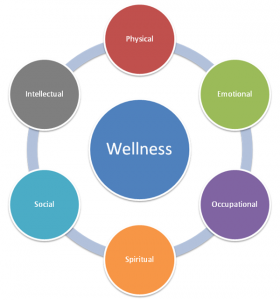 The Modern Healthcare edition of September 6, 2010 has a cover headline that reads: “Passing the Buck,” and the descriptor goes on to explain that “Yet a new report says workers’ share of benefit costs is skyrocketing.” The actual opening line of the article starts with “Workers are shouldering more of the costs of health coverage than ever before amid stagnant wages and a weak economy”…
The Modern Healthcare edition of September 6, 2010 has a cover headline that reads: “Passing the Buck,” and the descriptor goes on to explain that “Yet a new report says workers’ share of benefit costs is skyrocketing.” The actual opening line of the article starts with “Workers are shouldering more of the costs of health coverage than ever before amid stagnant wages and a weak economy”…
A few weeks ago, I wrote about Patient Advocacy, a subject about which I am passionate. So, this blog is about patient and employee advocacy that also provides additional resources for hospitals to help them address the current economic challenges.
Every year when we looked at our medical insurance costs at my hospital, a politically incorrect friend would jokingly suggest that we begin an annual, required participation August Tennis Tournament for our high-utilization employees, but only after the temperatures reached at least 95 degrees. “It would be a thinning of the herd,” he would jokingly say with an elf-like smile on his face. We would then get serious and dig into a long list of creative ideas aimed at helping contain these costs so that we would not have to lower benefits or pass the charges on to the employees.
Included in these lists were some rather simple ideas such as offering, in a structured manner, the wellness options covered under our health insurance umbrella and generally rewarding our employees for taking better care of themselves. We significantly reduced fees for the workout facility (1/3 of the regular cost ), provided personalized counseling from our dietitians, had a weight loss contest and gave rewards for taking classes on stress management, smoking cessation, diabetes control and exercise.
We offered psychological counseling for our employees who were suffering from stress related issues. Our food service vendor, CURA, made sure that “no transfats” were a part of the hospital’s meals, that there were always low-fat vegetarian choices on every menu, that snacks were reasonable and that our vending machines had healthy choices. We also celebrated life and work on a regular basis. We had cook-outs, off-stage break rooms, massage, aroma, Reiki, pet and music therapy. We provided drum circles, non-denominational spiritual services and meditation classes; kick boxing, Pilates, pool therapy, and employee parties.
So, short of forced tennis matches, how else can we control these costs? The following is a summary of a program that SunStone Consulting is currently offering with two other business partners, CBIZ and InforMed.
Over the past 6 years, the average annual health insurance cost increase for InforMed-supported patient advocacy programs has run at 4.5%, compared to the 10-12% trend for all employers. In the case where a hospital with 1,500 employees is paying out about $10,000,000 a year for employee health insurance, a 5% savings over a three year period would generate $3.3 million in savings. Let me repeat that: By lowering those premium increases by 5%, there would be over three million extra dollars available for hospital financial needs and co-pays and deductibles for the employees would not have to continue to escalate by 13 to 15% annually.
 The care management “engagement” rate of all the major insurance companies is about 30%. That means that the insurance company-based “help programs” are about 1/3 effective in even reaching the employees. This non-insurance company based program, however, has a 70% engagement rate of identified large claimants, more than double the insurance company’s rate, and with over 1 million employees in this program, they produce a 98% patient satisfaction rate.
The care management “engagement” rate of all the major insurance companies is about 30%. That means that the insurance company-based “help programs” are about 1/3 effective in even reaching the employees. This non-insurance company based program, however, has a 70% engagement rate of identified large claimants, more than double the insurance company’s rate, and with over 1 million employees in this program, they produce a 98% patient satisfaction rate.
By employing local, trained, patient advocacy nurses, paying physicians a monthly stipend out of the savings to help manage these patient/employees, and then helping those high utilization patients legitimately navigate through the nine to fifteen physicians with whom they interact on an annual basis, health systems are seeing tremendous savings. (Kind of the Best of Managed Care scenario.)
These are clear, actionable items that will positively change a bottom line quickly and permanently without having to increase the financial burden on the employees.
Why not try it? It works.





